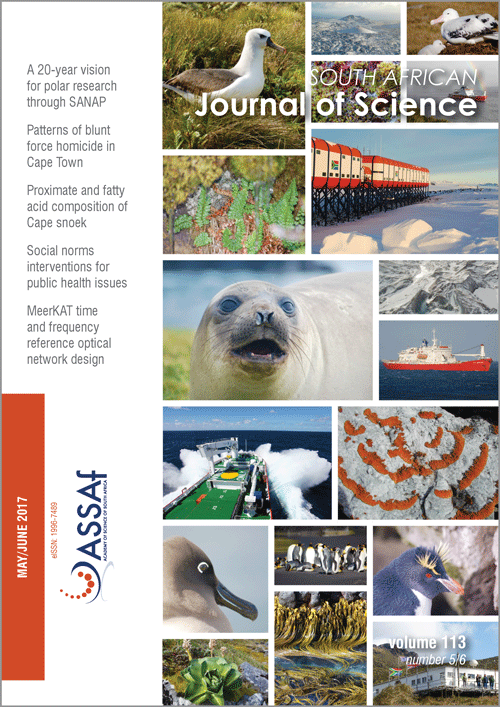Stable isotope (δ13C) profiling of xylitol and sugar in South Africa
DOI:
https://doi.org/10.17159/sajs.2017/20160276Keywords:
sucrose, disaccharide, maize, sugarcane, sugar beet, birchAbstract
Xylitol is an alternative sweetener to sucrose, glucose and fructose, and is available under a number of brands in South Africa. Carbon stable isotope values (δ13C) of a selection of commercially available xylitol products (n=28) were analysed and compared with sugar samples (n=29). Sugarcane (C4) and beet sugar (C3) derived sugar samples aligned with published values of source, although two samples that indicated a sugarcane origin suggested a beet sugar origin. Control corn-derived samples defined a stepwise xylose to xylitol discrimination of +0.7‰. The distinction between C3- and C4-derived xylitol was less clear with three samples difficult to define (range = -14.8 to -17.1‰). The values for a suite of xylitol samples (-22.3‰ to -19.7‰; n=8) that aligned closely with a suspected C3-derived xylose, were ~8‰ more positive than known birch isotope values. Some xylitol samples may thus represent (1) a mixture of C3- and C4-derived products, (2) derivation from a CAM species source or (3) different processing techniques in which the discrimination values of xylose from corn, and xylose from birch, may differ because of the respective chemical processing techniques. No samples that claimed a birch bark origin were within the range of samples suggested to be corn derived (i.e. -13.0‰ to -9.7‰, n=16). We suggest that the threshold values provided are relatively robust for defining the origins of xylitol and sugar, and can be used in determining the authenticity and claims of suppliers and producers.
Significance:-
Stable isotope (δ13C) profiles of commercially available xylitol and sugar products in South Africa will enable the determination of authenticity.
Downloads
Published
Issue
Section
License

All articles are published under a Creative Commons Attribution 4.0 International Licence
Copyright is retained by the authors. Readers are welcome to reproduce, share and adapt the content without permission provided the source is attributed.
Disclaimer: The publisher and editors accept no responsibility for statements made by the authors
How to Cite
- Abstract 503
- PDF 875
- EPUB 213
- XML 249
- Supplementary file 216












.png)